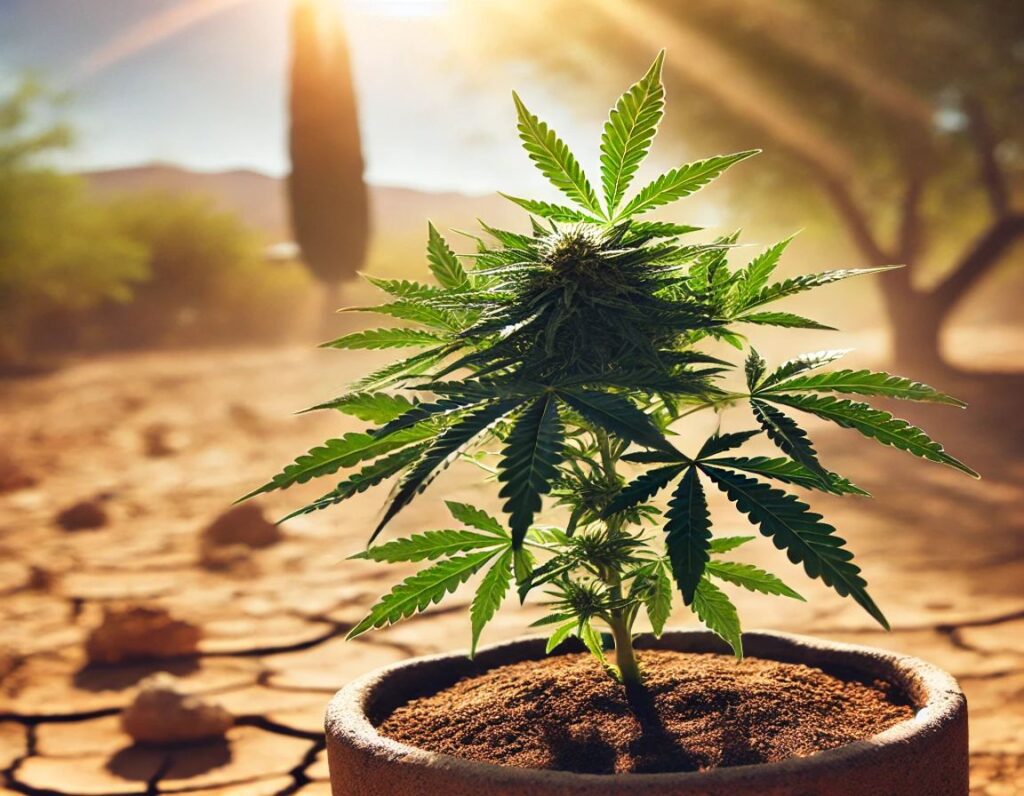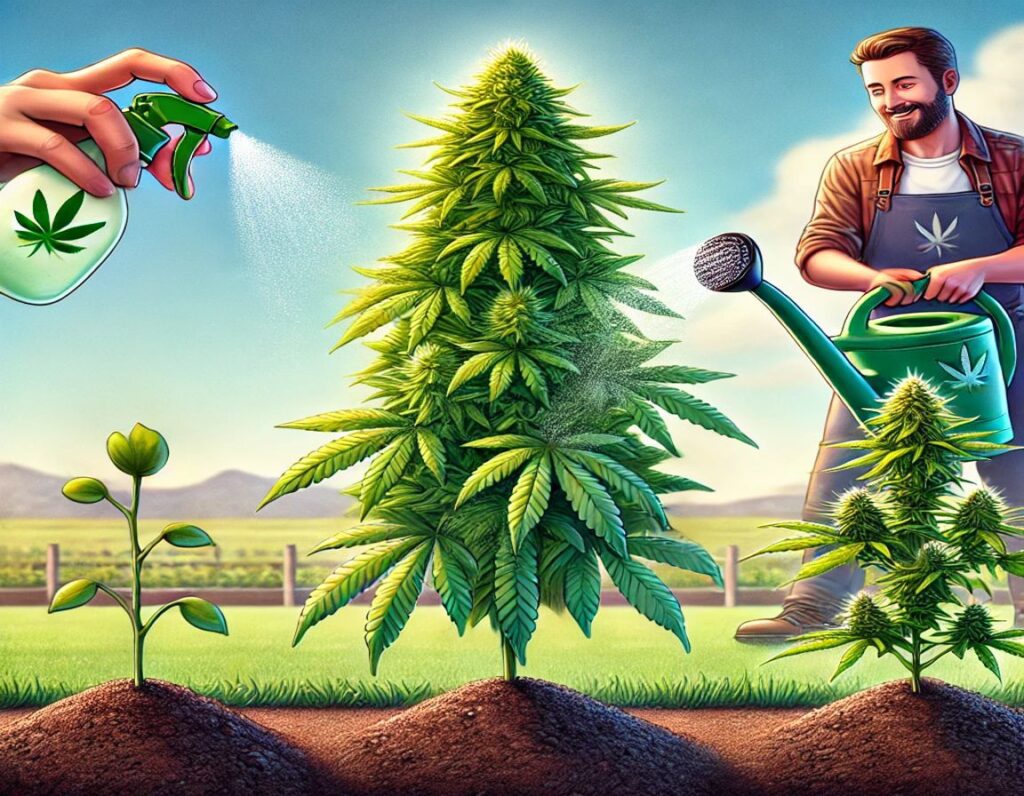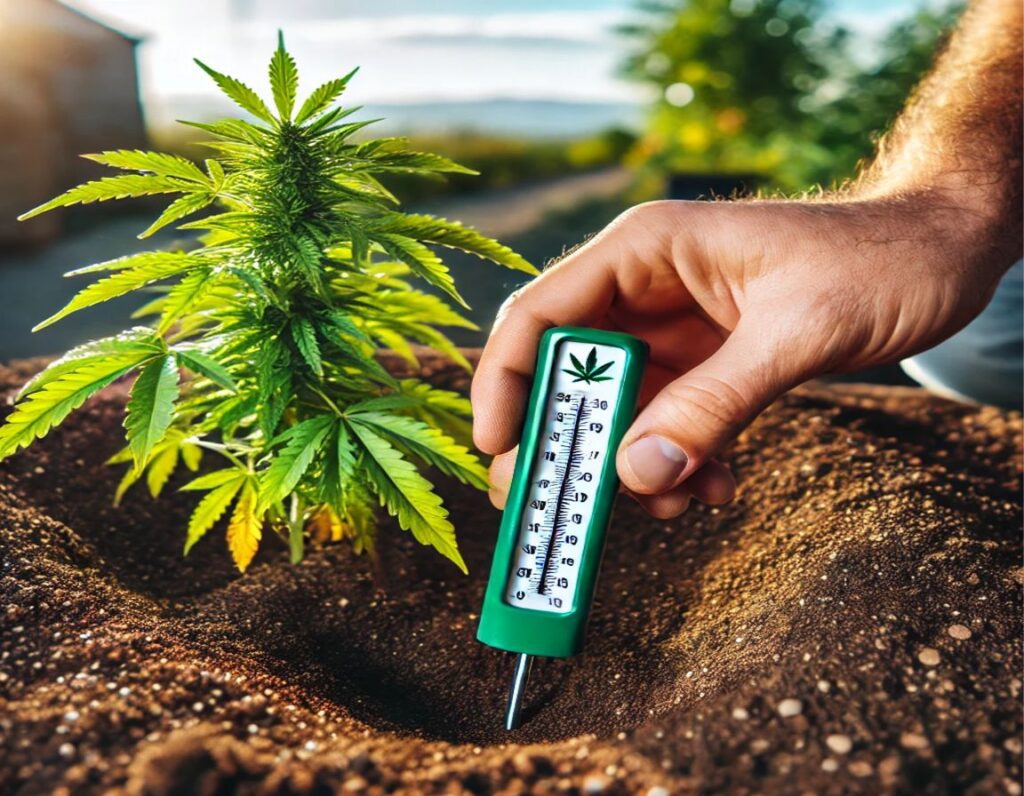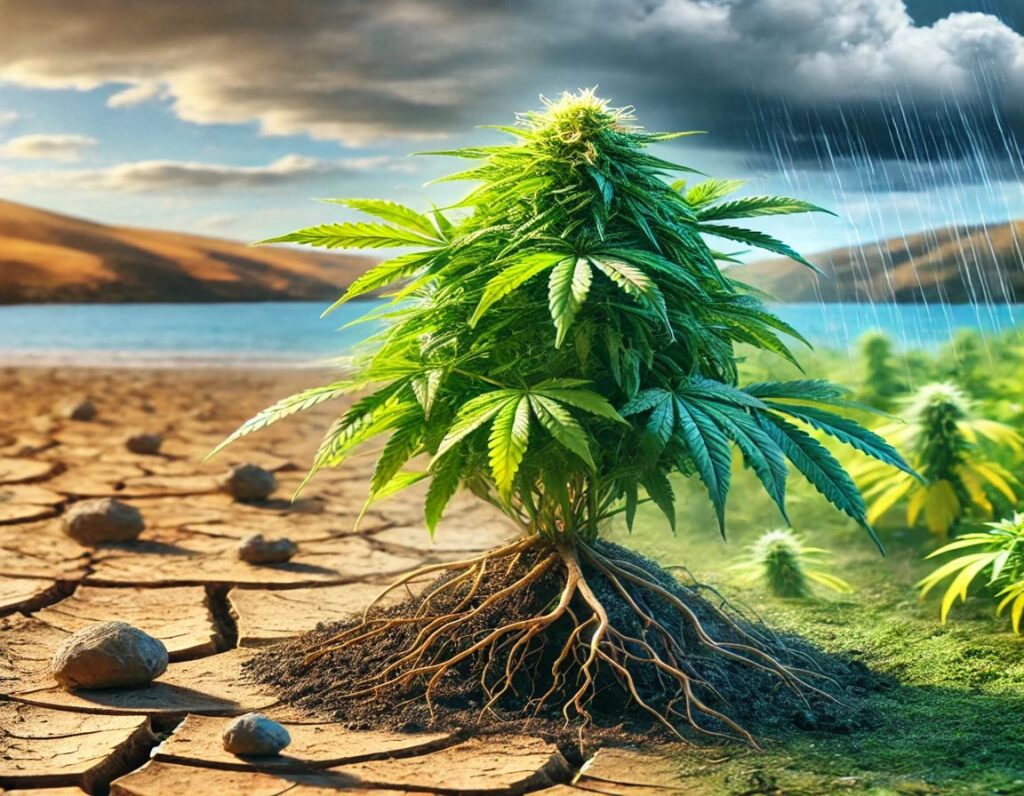
When cultivating Green Crack seeds, getting your watering schedule right is one of the most crucial steps to ensuring healthy and robust plants. Watering too often can result in waterlogged soil, suffocating the roots and leading to root rot. Underwatering, on the other hand, can cause your plants to wilt, resulting in stunted growth and reduced yields.
The general rule is to water when the top 1-2 inches of soil feel dry to the touch. In the USA, different regions have varied climate conditions that can influence how frequently you water. For instance, in arid climates like those in Arizona or Nevada, you might need to water every 2-3 days due to faster evaporation. In more temperate climates like Washington or Oregon, watering once every 3-5 days might be sufficient.
Outdoor growers should also take seasonal changes into account. During the peak summer months, your plants will require more frequent watering as the heat increases evaporation. In contrast, during cooler months or in states with cooler climates, you may need to reduce your watering schedule.

Watering at the right time of day plays a significant role in optimizing plant hydration. The best time to water your Green Crack seeds is early in the morning, preferably between 6 AM and 10 AM. Watering early allows the soil to absorb moisture before the heat of the day accelerates evaporation. This gives your plants enough hydration to sustain them through the warmer parts of the day.
If your schedule doesn’t allow for morning watering, the next best option is late afternoon. However, avoid watering late in the evening, as cooler temperatures combined with damp soil can create an environment conducive to mold, mildew, and other fungal issues, especially in humid regions like the Southeastern US.
For indoor growers using artificial lighting, it’s best to water your plants during the light cycle, as plants are more active and absorb water more efficiently when they are photosynthesizing.

Different stages of growth require different watering techniques to ensure that your Green Crack plants thrive at every stage of their life cycle:
The seedling phase is one of the most delicate periods in a cannabis plant’s life. Young seedlings are highly vulnerable to both overwatering and underwatering. During this stage, it’s best to water lightly but frequently to keep the soil moist without drowning the roots. Many growers use a spray bottle to mist the soil and avoid waterlogging the roots. Water every 1-2 days or whenever the topsoil feels dry.
In the vegetative phase, your Green Crack plants will focus on growing strong stems and leaves. During this period, they require more water to support rapid growth, but you should still avoid overwatering. Allow the top 1-2 inches of soil to dry between watering sessions. Deep watering during this phase encourages the roots to grow deeper, which strengthens the plant’s foundation and helps it better access water and nutrients.
Once your plants enter the flowering stage, their water needs will change again. While they still require hydration, overwatering at this stage can result in nutrient lockout, which will reduce the quality of the buds. Instead of watering deeply, reduce the frequency slightly, especially as the flowers mature. This helps prevent the development of mold or mildew on the buds, particularly if you’re growing in humid regions like the Gulf Coast.

Good drainage is essential for a successful watering routine. Water that sits around the roots can lead to serious issues like root rot, which can stunt plant growth and even kill the plant. When growing Green Crack seeds, it’s crucial to use well-draining soil. A soil mix that includes perlite or coco coir helps retain the right amount of moisture while allowing excess water to drain. If you’re growing in containers, ensure the pots have sufficient drainage holes.
In addition to drainage, water quality also plays a critical role. In the USA, tap water quality varies greatly from one region to another. In some areas, tap water may contain high levels of chlorine, fluoride, or other chemicals that can harm your plants over time. If you’re unsure about your water quality, it may be worth investing in a filtration system or using distilled or rainwater. Another cost-effective option is to let tap water sit out for 24 hours to allow the chlorine to evaporate before using it for your plants.
Many experienced growers also test the pH level of their water to ensure it’s in the optimal range for cannabis plants, which is typically between 6.0 and 7.0. Water that is too acidic or too alkaline can interfere with nutrient uptake, leading to deficiencies that affect plant health and yield.

Knowing when and how much to water depends on how well you can monitor your soil’s moisture levels. A common technique is the “finger test,” where you insert your finger into the soil up to the second knuckle. If the soil feels dry at this depth, it’s time to water. For a more precise measurement, many growers invest in moisture meters that provide accurate readings of how much moisture is present in the soil.
Mulching is another technique that can help you manage soil moisture, particularly for outdoor growers. Organic mulches, such as straw or wood chips, create a protective layer that reduces water evaporation and keeps the soil cooler during hot weather. However, if you are growing in humid areas, use mulch sparingly to avoid trapping too much moisture, which can encourage mold growth.

The diverse climates across the USA mean that growers must adjust their watering routines based on local environmental conditions. For instance, in arid and dry regions like Nevada or New Mexico, your Green Crack plants may need to be watered more frequently, and you may want to consider using moisture-retentive soil mixes or employing drip irrigation to reduce water loss.
Conversely, in wetter or more humid regions like Florida or Louisiana, where the risk of overwatering and mold is higher, less frequent watering is necessary. For growers in these regions, it’s essential to focus on soil drainage, ensuring that excess water doesn’t sit around the roots. It’s also important to keep an eye on local weather patterns—if rain is expected, you may want to hold off on watering to avoid oversaturation.
Indoor growers have more control over their environment but should still pay attention to factors like humidity, temperature, and airflow, which can affect the watering needs of their plants. Using a dehumidifier in particularly humid environments or an air conditioning system can help maintain a stable environment for your plants.
Water your Green Crack seeds when the top 1-2 inches of soil are dry, generally every 2-3 days, but adjust based on your region and weather conditions.
Morning is the best time for watering to minimize evaporation and prevent mold from forming, especially in humid climates.
Adjust your watering frequency as your plants progress through different growth stages, with seedlings needing frequent but light watering, and flowering plants needing slightly less frequent, deep watering.
Use well-draining soil and ensure pots have adequate drainage holes to avoid waterlogged soil, which can lead to root rot and poor growth.
For areas with hard water or chemicals, consider using filtered, distilled, or rainwater. Monitor the pH of your water to ensure it’s within the optimal range for cannabis plants (6.0-7.0).
Keep an eye on soil moisture using simple techniques like the finger test or invest in a moisture meter for more accuracy.
Water lightly every 1-2 days using a spray bottle to keep the soil moist but not waterlogged.
Early morning is the best time to water to avoid quick evaporation and give your plants moisture throughout the day.
Tap water is often fine, but if it contains chlorine or other chemicals, consider using filtered or rainwater for better results.
Signs of overwatering include yellowing leaves, soggy soil, and slow growth. Ensure the top layer of soil dries out between watering.
Adjust your watering schedule accordingly. If your soil is saturated from rainfall, hold off on additional watering until the soil dries.
We ship and deliver world wide via USPS and various couriers.
We offer a wide range of secure and anonymous online payment options.
We care about you, our customer. Please contact us with any questions or concerns.
Find out more about the benefits of being a loyal and regular customer.
WE ARE EVERY GROWERS ONE STOP SHOP TO ACQUIRE PREMIUM CANNABIS SEEDS FOR SALE IN THE USA, CANADA AND AUSTRALIA

Farmers Lab Seeds 2024, | All Right Reserved
Seeds are sold as novelty items, souvenirs, and collectibles. They contain 0% THC. We encourage our customers to check the legislation in their Country, State, Province, and Municipality prior to purchasing items from our store. We do not provide growing information.
All seeds are sold as hemp, and lab tested under 0.3% THC. This product is not for use by or sale to persons under the age of 21. This product should be used only as directed on the label. It should not be used if you are pregnant or nursing. Consult with a physician before use if you have a serious medical condition or use prescription medications. A Doctor’s advice should be sought before using this and any supplemental dietary product. All trademarks and copyrights are property of their respective owners and are not affiliated with nor do they endorse this product.
These statements have not been evaluated by the FDA. This product is not intended to diagnose, treat, cure or prevent any disease. Individual weight loss results will vary. By using this site, you agree to follow the Privacy Policy and all Terms & Conditions printed on this site. Void Where Prohibited by Law.